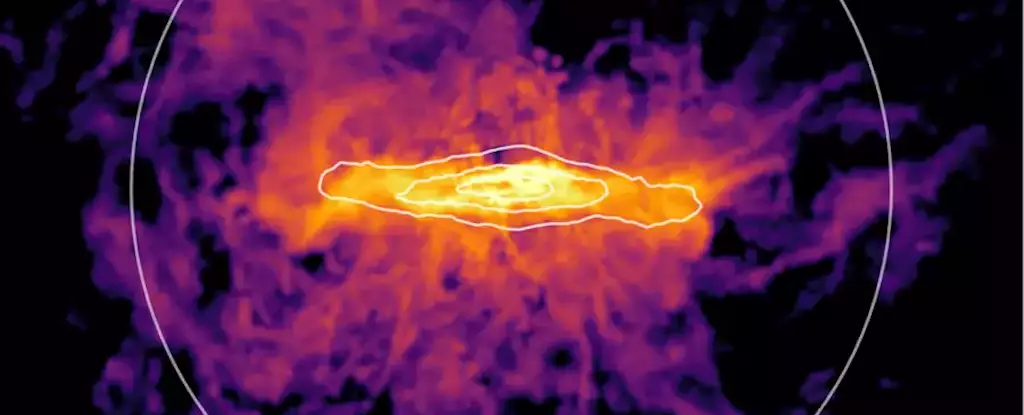Carl Sagan’s profound assertion that “we are made of star-stuff” encapsulates a fundamental truth about our existence: the elements that constitute our bodies originated in the hearts of distant stars. However, a fascinating new revelation suggests that the carbon found within us may not have traveled a direct route from celestial bodies to Earth. Recent findings from the Hubble Space Telescope indicate that some of this carbon has ventured hundreds of thousands of light-years beyond our galaxy, before making its return. This realization deepens our understanding of cosmic cycles and the interconnectedness of galactic evolution.
In the life cycle of stars, elements heavier than helium are synthesized in their cores through the process of nuclear fusion. Upon their demise, these stars explode as supernovae, scattering their enriched materials across the universe. This is where the journey becomes intriguing: while it was previously believed that these elements remain somewhat local to their galaxies, new research highlights how carbon can migrate into the circumgalactic medium (CGM)—a vast gaseous halo enveloping galaxies—before eventually being reabsorbed into new star systems. As astronomer Jessica Werk aptly notes, the notion that the carbon in our bodies has spent part of its existence beyond the galaxy opens new avenues for understanding the cosmic ecosystem.
The circumgalactic medium acts as an expansive reservoir, continually pushing and pulling materials within the cosmic environment. Samantha Garza, lead author of the study, likens this dynamic to a “giant train station.” The CGM is crucial for the natural recycling of materials, including heavy elements, as they flow in and out of galaxies. This mode of operation not only sustains the formation of stars and planets but also suggests a regulated balance within the cosmic architecture. The identification of carbon—previously thought to be absent from such flows—marks a pivotal moment in astrophysics, revealing that these essential elements are part of an intricate cycle of creation and destruction in and around galaxies.
To uncover this wandering carbon, researchers utilized the Hubble Space Telescope’s Cosmic Origins Spectrograph, analyzing the light emitted by nine distant quasars. Each element has a unique spectral signature, allowing scientists to detect the presence of specific elements such as carbon in the CGM of star-forming galaxies. Through their detailed analysis, they estimated that there is a mass of carbon equivalent to at least three million suns lurking within this circumgalactic expanse. This breakthrough not only adds to our knowledge of stellar formation but also affirms the significance of the CGM as a funnel for essential materials.
Interestingly, the study reveals that active, star-forming galaxies exhibit a greater abundance of carbon and oxygen in their CGMs than more passive galaxies. This correlation highlights the importance of star formation activity in the cycling of galactic materials. As new stars form, they draw from the CGM, confirming that it serves as a vital source of the raw ingredients necessary for celestial birth. As Garza states, this observation solidifies the concept of the CGM as a critical reservoir for both carbon and oxygen, further demonstrating its role in the universe’s recycling mechanism.
The insights gained from studying the circumgalactic medium open the door for an enhanced understanding of galactic dynamics, particularly concerning star formation processes and the amalgamation of galaxies. As ongoing research continues to unravel these complex interactions, we may gain clarity on critical events such as galaxy mergers—an eventual scenario that awaits the Milky Way. By leveraging the knowledge of how material circulates within the CGM, astronomers can hypothesize about the effects of these cosmic collisions, enriching our comprehension of the universe’s ever-evolving narrative.
Ultimately, the revelation that the carbon in our bodies has a history of cosmic travel enriches our understanding of our connection to the universe. Sagan’s words resonate even more poignantly, as we realize that the ‘star stuff’ comprising our very essence has taken an extraordinary journey, enduring a passage through the vast unknown before forming the Earth and life as we know it. This extraordinary journey of elementary particles signifies the continual cycle of birth, death, and rebirth that characterizes the cosmos, reminding us of our place within this grand, interconnected tapestry of existence.

